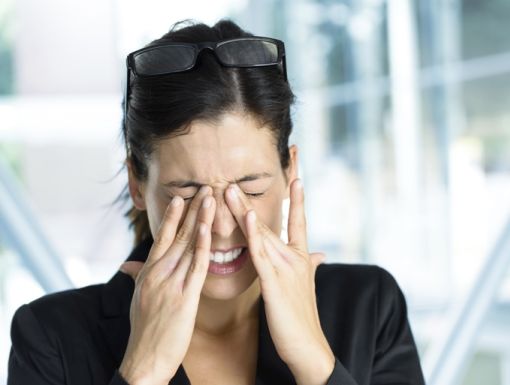
Chalazion: How to Treat this Eyelid Bump
Noticing a bump on your eyelid can be scary. The first thoughts that might pop into your head are “What is it” and “How can I treat it?” You might have something called a chalazion. This happens when an oil gland on the eyelid becomes blocked, and a small red bump can appear on the upper or lower eyelid. The good news is chalazia (plural for chalazion) are treatable with home care and medical options if needed.
What causes a chalazion?
Our eyelids (both upper and lower) have glands on them called meibomian glands. These glands produce oil that helps moisten and protect our eyes. If the oil in these glands thickens too much or the glands become blocked from inflammation, you may get a chalazion. A chalazion can develop for various reasons; some causes can include:
- Using old makeup or not completely removing your makeup
- Chronic blepharitis, an eye disorder that causes eyelid inflammation, redness, swelling and irritation
- People who have viral conjunctivitis, an infection inside the eye and eyelids
- People who have rosacea, a skin condition that can cause acne and redness
Chalazia typically occur in people between the ages of 30-50. Children rarely develop chalazia, but it can happen occasionally.
What are the symptoms of a chalazion?
When a gland on the eyelid becomes blocked, oil can begin building up, causing swelling to occur and a hard lump on the eyelid to form. Symptoms can include:
- Large, painless bump on the upper eyelid: At first, the chalazion may cause some slight pain, but it typically does not hurt after a bit of time. Chalazia usually appear on the upper eyelid, but it can affect the lower eyelid too.
- Mild eye irritation: This may cause the eyes to water
- Blurred vision: While chalazia do not generally form near the eye, they can start to push the eyelid against your eye, affecting your vision if it gets large enough.
What is the difference between a chalazion and a stye?
Styes can also cause a bump to form on your eyelid. Although they may look similar, there are some critical differences between an eye stye and a chalazion.
- The location of the bump: When a person has a stye, the bump typically develops on along the outer rim of the eyelid, and it can cause the eyelid to become swollen. A chalazion typically forms farther back on the upper part of the eyelid. Chalazia can also grow much larger than a stye.
- Pain: A stye can be very painful and is very tender to the touch. While a chalazion may be slightly painful when it first appears, this pain typically does not last.
- Infectious: The most significant difference between a stye and a chalazion is styes are a bacterial infection, where a chalazion is just an inflamed or irritated gland.
How is a chalazion treated?
If you believe you have a chalazion (or if any bump grows on your eye), it is best to see an ophthalmologist. During the exam, your doctor will go over symptoms and any past eye problems. If you have a chalazion, your ophthalmologist will often suggest some home remedies first, including:
- Apply a clean, warm washcloth to the affected area for 15 minutes. This process should be repeated three times a day (morning, afternoon and evening) to help open the blocked gland.
- Massage the affected area for a few minutes a day. This can also help open the gland and release any trapped oil.
- Keep the eyelid area clean. This includes not wearing any makeup, washing your face regularly with a gentle cleanser and warm water and avoid touching your eyes.
If home treatments do not work, your ophthalmologist may recommend medical treatment, including injecting a steroid into the affected area or draining the blocked gland.
If you frequently get chalazia, your ophthalmologist will also want to rule out other causes. If eye conditions like chronic blepharitis are the root cause for developing chalazion, they will want to be sure to treat that condition.
What is the best way to prevent a chalazion from forming?
While there is no way to completely prevent getting a chalazion, you can take steps to lower your chances.
- Wash your hands frequently with soap and water, especially if you wear contacts.
- Make sure anything that encounters your eyes, such as eyeglasses or contacts, is clean.
- Always wash your makeup off before going to bed. Makeup left on for too long can clog glands on your eyelids.
- If you have conditions that can increase your chances of getting a chalazion, like rosacea or blepharitis, talk with your doctor to get instructions on how to control those conditions.



